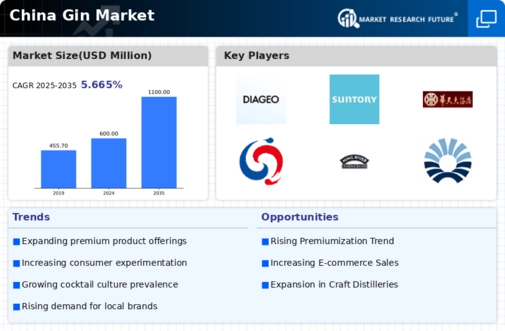The competitive landscape of the China Gin Market has been evolving, with increasing interest and demand for gin as a premium alcoholic beverage. As younger consumers begin to gravitate towards craft spirits and innovative flavors, the market has seen an influx of both domestic and international brands striving to establish a foothold. The competitive dynamics are shaped by various factors, including unique branding strategies, flavor profiles, and marketing initiatives. The expansion of distribution channels, both online and offline, has allowed various competitors to reach new consumers.
As brands position themselves to cater to changing preferences, they constantly seek ways to differentiate their offerings while also navigating regulatory environments unique to the Chinese market.Zhongji Jinjiu has carved out a significant presence within the China Gin Market, capitalizing on its heritage and strong local connections. The company distinguishes itself with an emphasis on quality ingredients and traditional production methods, which resonate well with consumers who appreciate authenticity. Its brand strength is reflected in its loyal customer base, known to favor premium products that echo cultural narratives.
Zhongji Jinjiu has successfully utilized strategic partnerships with local distributors to enhance its market presence, ensuring its products reach a diverse range of consumers across various channels. Furthermore, the company has actively promoted itself through social media and lifestyle branding that appeals to younger demographics, a tactic that has fortified its standing amid growing competition.Xinghuacun Fenjiu, another key player in the China Gin Market, offers a varied portfolio of products that includes premium gin options appealing to a diverse audience.
This brand is recognized for its focus on quality and craftsmanship, often incorporating traditional distilling techniques while exploring modern flavor innovations. Xinghuacun Fenjiu’s market presence is bolstered by its strong distribution network, which spans both urban and rural areas, contributing to its widespread availability. The company has also engaged in strategic mergers and acquisitions to expand its capabilities and market reach, allowing it to diversify its product offerings. Key services include bespoke gin experiences and tasting events that connect with local enthusiasts and attract both domestic and international consumers.
The combination of rich heritage and progressive marketing strategies has placed Xinghuacun Fenjiu in a favorable position within the competitive landscape of the China Gin Market.







